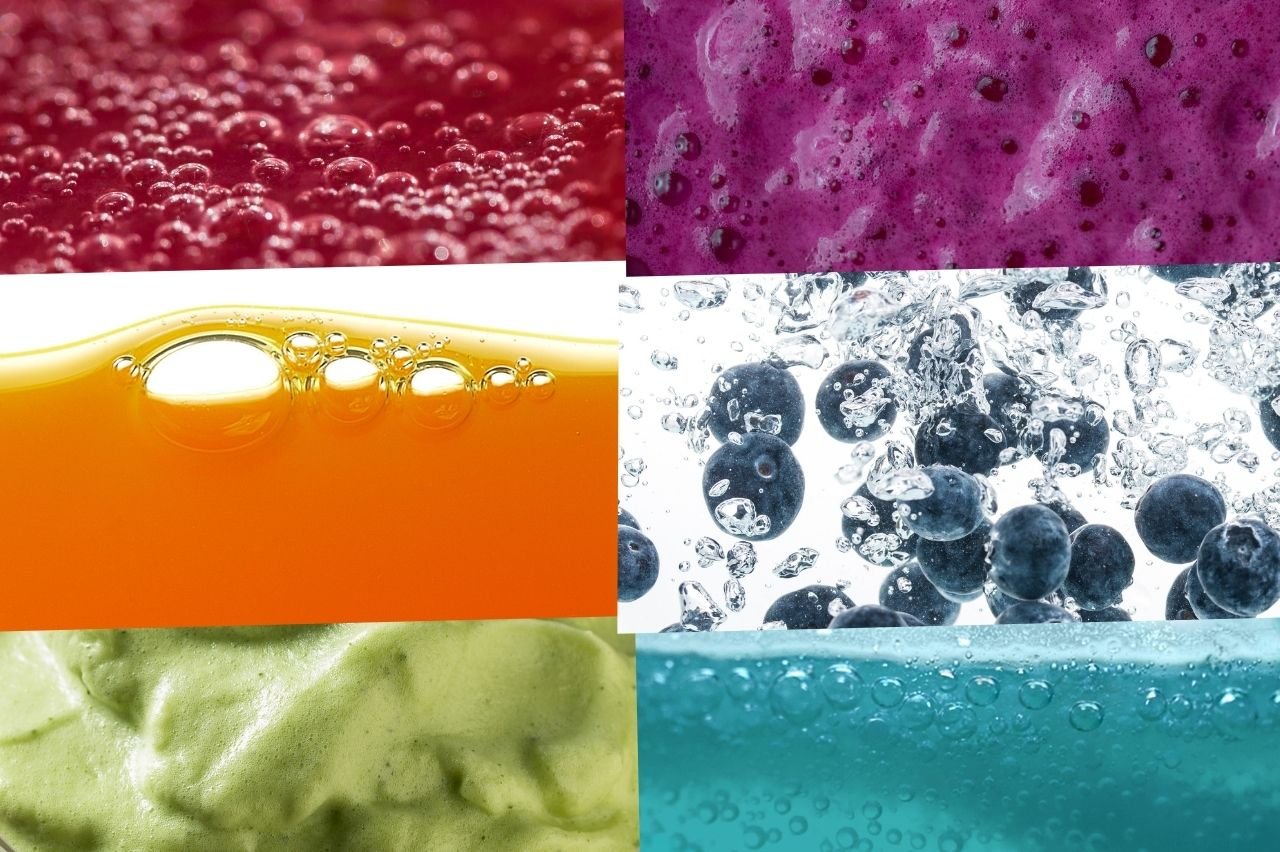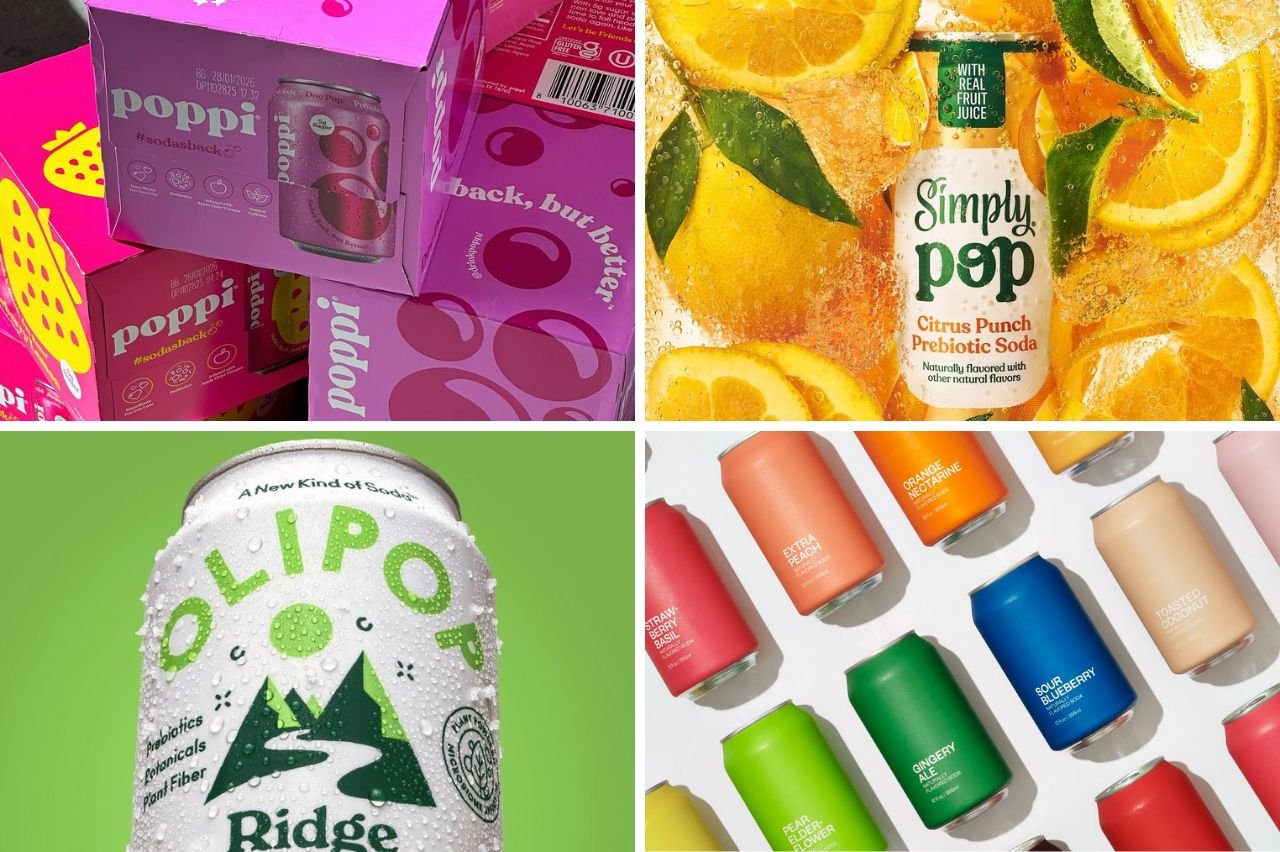Beverage Texture Trends: Redefining the Perfect Drink

In the ever-evolving world of beverages, a new trend is bubbling up to the surface, captivating both innovators and consumers alike.
While flavor profiles, nutritional value, and cost have long been the holy trinity of beverage development, there’s a new sheriff in town…
Texture. More specifically, beverage texture trends.
This aspect has long been overlooked. But now, it’s taking center stage.
And it’s revolutionizing the way we think about and enjoy our favorite beverages.
Innovation in Beverage Texture Trends
The beverage industry has long been dominated by a focus on taste and then health benefits. Brands have competed fiercely to create the most flavorful drinks or pack the most nutrients into every sip.
But things are changing. As consumer palates become more sophisticated and the market more saturated, innovators are turning to texture as a new frontier for differentiation and delight.
Which explains why beverage texture trends are starting to gain increased traction on social media platforms like TikTok.
This is more than a passing fad. It represents a deeper understanding of the multisensory experience that drinking provides. Remember that we taste with our eyes first, nose second and taste buds third.
Texture adds a new dimension to every beverage. They engage not just our taste buds but also our sense of touch and even our hearing.
It’s the satisfying pop of bubbles in a carbonated drink, the velvety smoothness of a well-crafted latte, or the unexpected chewiness of boba pearls in bubble tea.
“The beverage market is evolving rapidly. While RTD drinks are rising, Kombucha, craft beer, and seltzers are declining. Consumers are eager to try new products, which poses a challenge for lesser-known brands. I expect texture to become a key trend in the next 12 months.”
— Duncan Alney, Founder, Firebelly Marketing
Understanding Different Beverage Texture Trends
But what exactly do we mean by texture in beverages? It’s more than just thickness or thinness. Texture encompasses a wide range of sensory experiences:
- Mouthfeel: How the drink feels in your mouth. Is it creamy, silky, or crisp?
- Viscosity: The thickness or thinness of the liquid.
- Carbonation: The level and size of bubbles, from fine champagne-like effervescence to robust soda fizz.
- Particulates: Bits of fruit, seeds, or other elements suspended in the drink.
- Temperature: While not texture per se, temperature significantly affects how we perceive texture.
- Layering: Different densities of liquids that create visual and textural interest.
Each of these elements can be manipulated and combined in countless ways, offering beverage innovators a vast playground for creativity.
Texture Trends in Different Beverage Categories
Let’s explore how texture is making waves across various beverage categories:
- Soft Drinks: Gone are the days when carbonation was the only textural element in sodas. Now, we’re seeing the introduction of “soft bubbles” in sparkling waters, jellies in Asian-inspired sodas, and even chewy bits in experimental cola drinks.
- Coffee and Tea: The rise of nitro cold brew has introduced a creamy, velvety texture to coffee without added dairy. In the tea world, cheese tea with its frothy, savory-sweet topping has taken social media by storm.
- Smoothies and Juices: Chia seeds, basil seeds, and aloe vera chunks are being added to create interesting textures in otherwise smooth drinks. Some brands are even playing with “edible glitter” for a touch of whimsy and mouth-feel.
- Alcoholic Beverages: Mixologists are experimenting with foams, gels, and even edible cocktail spheres that burst in your mouth. Craft brewers are exploring different carbonation levels and adding fruit purees to create “smoothie beers.” Note: This is also true for non-alcoholic beverages!
- Plant-based Milk Alternatives: Texture has become a key battleground in the plant-based milk market, with brands striving to replicate the creamy mouthfeel of dairy milk using innovative processing techniques and natural stabilizers.
The Science Behind Texture
The science of beverage texture is a fascinating blend of physics, chemistry, and biology. Beverage scientists and food technologists are delving deep into:
- Rheology: The study of how liquids flow and deform under stress. This helps in understanding and manipulating viscosity.
- Tribology: The science of friction and lubrication, which is crucial for understanding mouthfeel.
- Colloid Science: Important for creating stable emulsions and suspensions in drinks.
- Sensory Science: Understanding how our brains interpret different textural stimuli.
These scientific principles are being applied to create novel textures. For instance, using high-pressure homogenization to create micro-bubbles that provide a creamy mouthfeel without added fat, or leveraging the gelling properties of natural ingredients like pectin or carrageenan to create unique textures.
Consumer Preferences and Texture
As beverage innovators push the boundaries of texture, they’re finding an eager audience. Consumer studies have shown that texture can significantly impact enjoyment and perceived value of a beverage. Some key insights:
- Younger consumers, particularly Gen Alpha and Gen Z and Millennials, are more adventurous and willing to try unusual textures.
- Texture can influence perceptions of healthiness and premium quality.
- Different cultures have varying texture preferences, offering opportunities for cross-cultural innovation.
- Texture can enhance the perception of flavor intensity and duration.
Moreover, texture is becoming a key part of the “Instagrammable” beverage trend. Drinks with visually interesting textures – like layered smoothies or bubble teas – are more likely to be shared on social media, providing free marketing for brands.
Challenges in Texture Innovation
While texture offers exciting possibilities, it also presents unique challenges for beverage innovators:
- Stability: Creating textures that remain consistent throughout the product’s shelf life can be tricky.
- Scalability: What works in a small batch might be difficult to reproduce on an industrial scale.
- Clean Label Demands: Consumers want interesting textures but also clean, natural ingredient lists.
- Packaging: Some textural elements may require special packaging to maintain quality.
- Education: Consumers might need guidance on how to best enjoy beverages with novel textures.
The Future of Texture in Beverages
As we look to the future, the role of texture in beverages is only set to grow. Here are some trends to watch:
- Personalization: With advances in 3D printing and home carbonation systems, consumers might soon be able to customize the texture of their drinks at home.
- Functional Textures: Textures that not only please the palate but serve a functional purpose, like slow-release energy drinks.
- Cross-Category Inspiration: Expect to see more textural elements from food making their way into drinks, and vice versa.
- Sustainable Textures: Upcycled ingredients and byproducts being used to create interesting textures while reducing waste.
- Smart Packaging: Interactive packaging that can alter the texture of a drink just before consumption.
A New Era of Drinkability
As we’ve explored, texture is far more than just a supporting player in the world of beverages – it’s becoming the star of the show. This focus on texture is redefining what makes the perfect drink, adding a new dimension to the traditional considerations of flavor, nutrition, and cost.
For beverage innovators, texture offers a new canvas for creativity and differentiation in a crowded market. For consumers, it promises more engaging, multisensory drinking experiences that go beyond mere thirst-quenching or flavor enjoyment.
The texture revolution in beverages is just beginning, and it’s an exciting time for both creators and consumers. As you sip your next drink, pay attention to its texture – you might just be tasting the future of beverages.
So, the next time you’re pondering what makes the perfect drink, remember: there’s a new sheriff in town, and its name is Texture.


